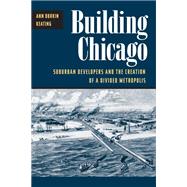
| List of Tables | |
| List of Maps | |
| Acknowledgments | |
| Introduction to the Illinois Paperback | |
| Introduction | p. 1 |
| Patterns of Settlement | p. 11 |
| The Expansion of City Government | p. 33 |
| Technological Change and Chicago Homes | p. 51 |
| The Best of Both Worlds | p. 64 |
| Local Government Responds to Suburbanization | p. 79 |
| Suburban Government and Annexation | p. 98 |
| The Suburb Arrived | p. 120 |
| Notes | p. 127 |
| Selected Bibliography | p. 135 |
| App. A: Note on Tables | p. 169 |
| App. B: Maps | p. 209 |
| Index | p. 221 |
| Table of Contents provided by Blackwell. All Rights Reserved. |
The New copy of this book will include any supplemental materials advertised. Please check the title of the book to determine if it should include any access cards, study guides, lab manuals, CDs, etc.
The Used, Rental and eBook copies of this book are not guaranteed to include any supplemental materials. Typically, only the book itself is included. This is true even if the title states it includes any access cards, study guides, lab manuals, CDs, etc.